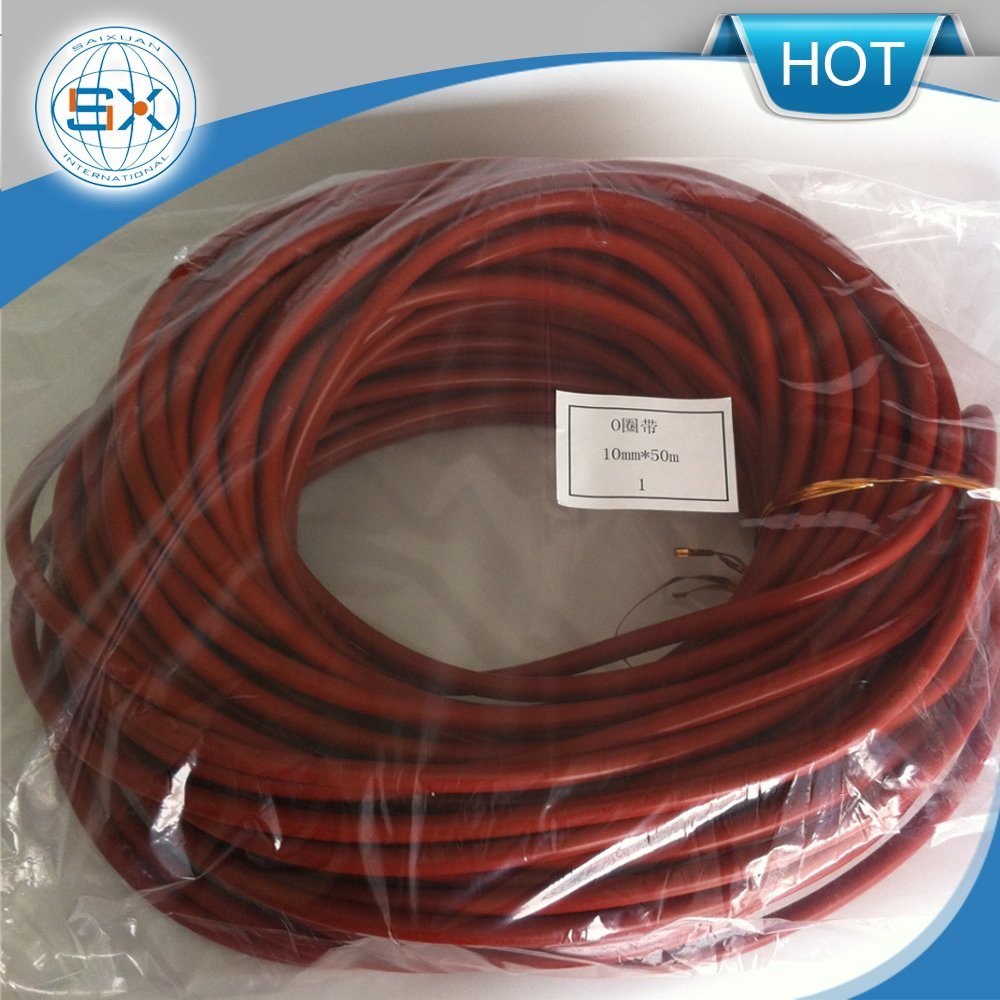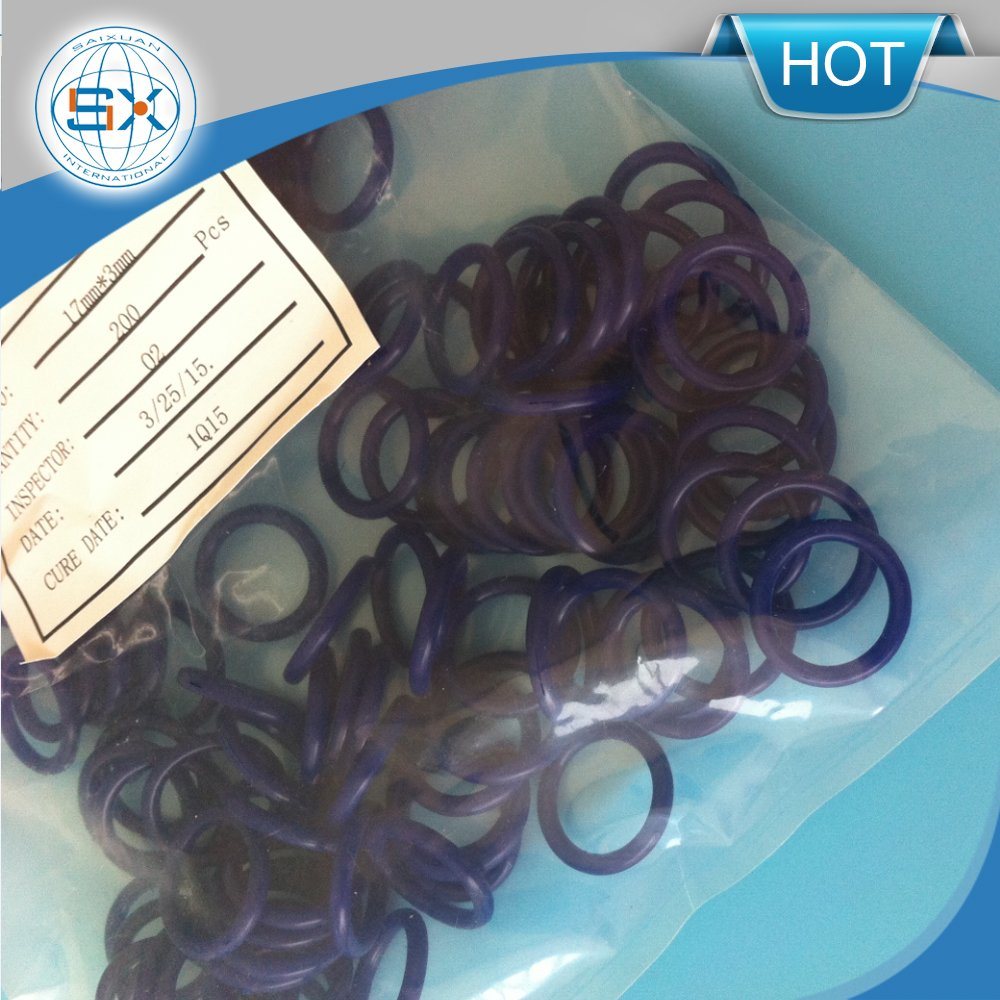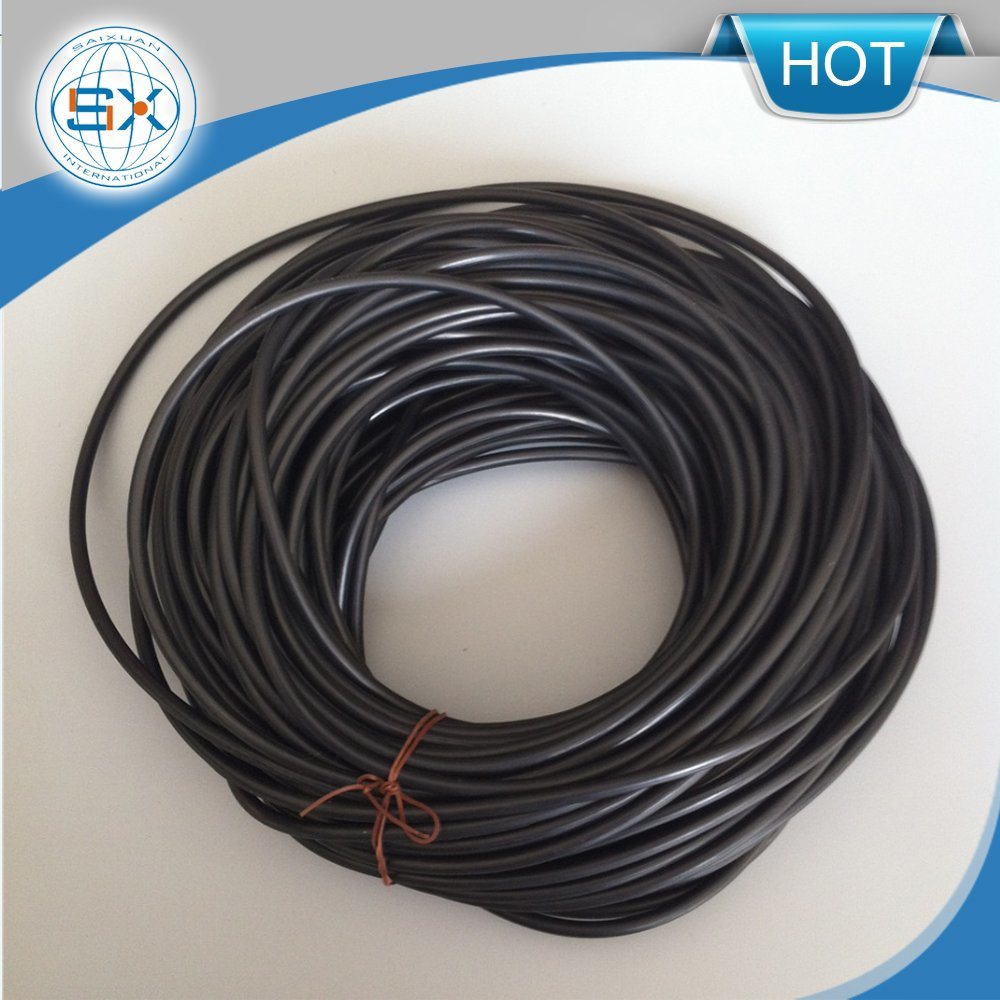Product group: OR O-rings
Material
NBR 70Â Â Â
Colour
NBR 70, black
Tolerances: as per DIN 3771 / ISO 3601
Materials with approvals and/or conformity tests for special applications (gas, drinking water, foodstuffs) are available, as required.
Operational application limitsÂ
Temperature EPDM 70: -45 °C to +130 °C
Temperature FKM: -15 °C to +200 °C
Temperature HNBR 70: -30 °C to +150 °C
Temperature NBR: -30 °C to +100 °C
Temperature VMQ 70: -55 °C to +200 °C
Â
| Detail | Silicon o-ring seal kit | ||
| Material | NBR and NBR cloth (Temperature<100ºC) |
Working Temperature |
NBR (-30ºC~ +100ºC) |
| FKM and FKM cloth ( Temperture>180ºC) |
FKM (-20ºC~ +250ºC) |
||
| Tensile Strength | NBR (14 Mpa) | ||
| FKM (12Mpa) | |||
| Hardness | 50~90 shore A | ||
| Working Medium | Lubricant, oil, water | ||
| Color | Black or other colors you need | ||
| Size | Customize | ||
| 3D/CAD drawing | Accept | ||
| Usage | Used in static applications or in dynamic applications where there is relative motion between the parts and the O-ring | ||
| Scope | Rotationg pump shafts, Hydraulic cylinder piston | ||
| Shipping | DHL, UPS, FEDEX, TNT, air freight, sea shipping or based on customer arrangement | ||



Function
O-rings are closed circular rings of circular cross-section. They are made through vulcanisation from form tools as a complete ring. The sealing function of the O-ring is achieved by the deformation of the cross-section when installed and compressed in its housing. The O-ring can be compressed either radially or axially in its installation housing. In operating conditions the pressure exerted by the media reinforces the sealing function, as under pressure the elastomer material functions as a non-compressible fluid.
Applications
O-rings are used predominantly for sealing non-moving machine and system components (static application) and media in liquid and gas form, e.g. flange and cover seals, threaded tube connections and the cylinder head and cylinder bottom for hydraulic cylinders. Under certain conditions it is also possible to use O-rings with reciprocating, rotating and helical movements (dynamic application). If the installation housing is finished properly, the construction design is right and the proper materials are selected, it is possible for pressures of up to 1000 bar to be sealed, with the use of back-up rings, where required. O-rings are used in many sectors, such as the fields of hydraulics, pneumatics, vacuum applications, the fittings industry, the automotive industry and in plant and mechanical engineering.
Installation housings
The installation housings (grooves) for O-rings should if possible be produced with right angles and should be processed with care. Burrs, scratches and notches should be avoided. The dimensions for the required depth and width of the groove depend on the particular application and cross-section. You will find recommendations for construction and dimension tables in our O-Ring Catalogue. To facilitate installation, a variety of surface coatings can be supplied on application.
Selection and designÂ
To ensure sound sealing effect, O-rings should be selected to offer the largest possible cross-section. The hardness of the O-ring material selected depends on the pressure, gap widths, type of sealing (static/dynamic) and the surface quality of the machine parts. For standard applications we recommend a material hardness of 70 Shore A. Careful consideration should also be given to the correct compression, elongation or compaction and the degree to which the groove in the installation housing is filled.
Suitability for specific media
EPDM
Good resistance to hot water and steam, detergents, caustic potash solutions, silicone oil and greases, many polar solvents, and many diluted acids and chemicals, along with a high level of ozone resistance. EPDM materials are totally unsuitable for use with all mineral oil products (lubricants, fuels).
FKM
Good chemical resistance to mineral oils and greases, synthetic oils and greases, engine, transmission and ATF oils to approx. +150°C, fuels, non-flammable hydraulic pressure fluids HFD, aliphatic, aromatic and chlorinated hydrocarbons, water to max. +80°C, excellent resistance to weathering, ozone and ageing, very low gas permeability (and therefore excellent for vacuum application) and resistance to a wide range of chemicals.
HNBR
HNBR is obtained by fully or partially hydrogenating NBR. It leads to considerable improvement in resistance to heat, ozone and ageing, and gives it very good mechanical properties, e.g. good resistance to wear. The media resistance compares to that of NBR. HNBR has a good resistance to some refrigerants. The temperature application range is from -30°C to +150°C.
NBR
Good chemical resistance to mineral oils and greases, hydraulic oils H, HL, HLP, non-inflammable hydraulic pressure fluids HFA, HFB, HFC to approx. +50°C and water to max. +80°CÂ
VMQ
Good resistance to water (up to 100 °C), aliphatic engine and transmission oils, animal and plant oils and fats. VMQ is generally not resistant to fuels, aromatic mineral oils, steam (short term up to 120 °C possible), silicone oils and greases, acids and alkaline compounds.
Installation
Avoid damaging the O-ring during installation, as this will cause leakage. Observe the following:
-Â The O-ring must not be expanded to its elongation limit.
-Â Edges must be burr-free, radii and angles applied smoothly.
-Â Dust, dirt, metal chips and other particles must be removed.
-Â Tips of screws and installation housings for other sealing and guiding elements should be covered by an assembly sleeve.
-Â A suitable grease to be applied to the assembly surfaces and O-rings.
- Elastomer materials are made smoother if they are heated in oil or hot water to approx. 80 °C. This makes it easier to stretch the O-ring for assembly.
-Â Any assembly tools used, such as expansion mandrels or sleeves, should be made of a soft material (e.g. POM) and not have any sharp edges.
-Â The O-ring should not be rolled over assembly surfaces. Ensure the O-ring is not twisted as it slots into the groove.
Â
1. Security
Electric tricycles are a safer means of transportation than ordinary bicycles. They use a safety system for motor vehicles, which has strong safety and prevents accidents caused by improper operation, which can better ensure the safety of passengers.
2. Comfort
Electric tricycles have good comfort, adopt a brand new frame structure design, effectively improve the stability of the vehicle, and have sufficient internal space to meet the various needs of passengers.
3. Economy
The economy of electric tricycles is also excellent, with energy-saving and environmental protection characteristics, more convenient operation, longer service life, and can help users reduce operating costs. Long term use is more conducive to saving expenses.
4. Environmental friendliness
Electric tricycles have the characteristics of energy conservation and environmental protection. They have low fuel consumption and emit less air pollutants, which can effectively reduce environmental pollution and help protect the environment. They can also help users reduce energy consumption.
5. Portability
Electric tricycles also have good portability, adopting advanced design that can reduce the body size and make the vehicle more flexible. They can easily pass through narrow intersections and climb slopes, effectively meeting the travel needs of users.
Three Wheel Electric Vehicle,Electric Tricycle Bikes,Hybrid Electric Tricycle,No Roof Electric Car
FengXian Enland International Trading Co.,LTD , https://www.enlandvehicle.com
